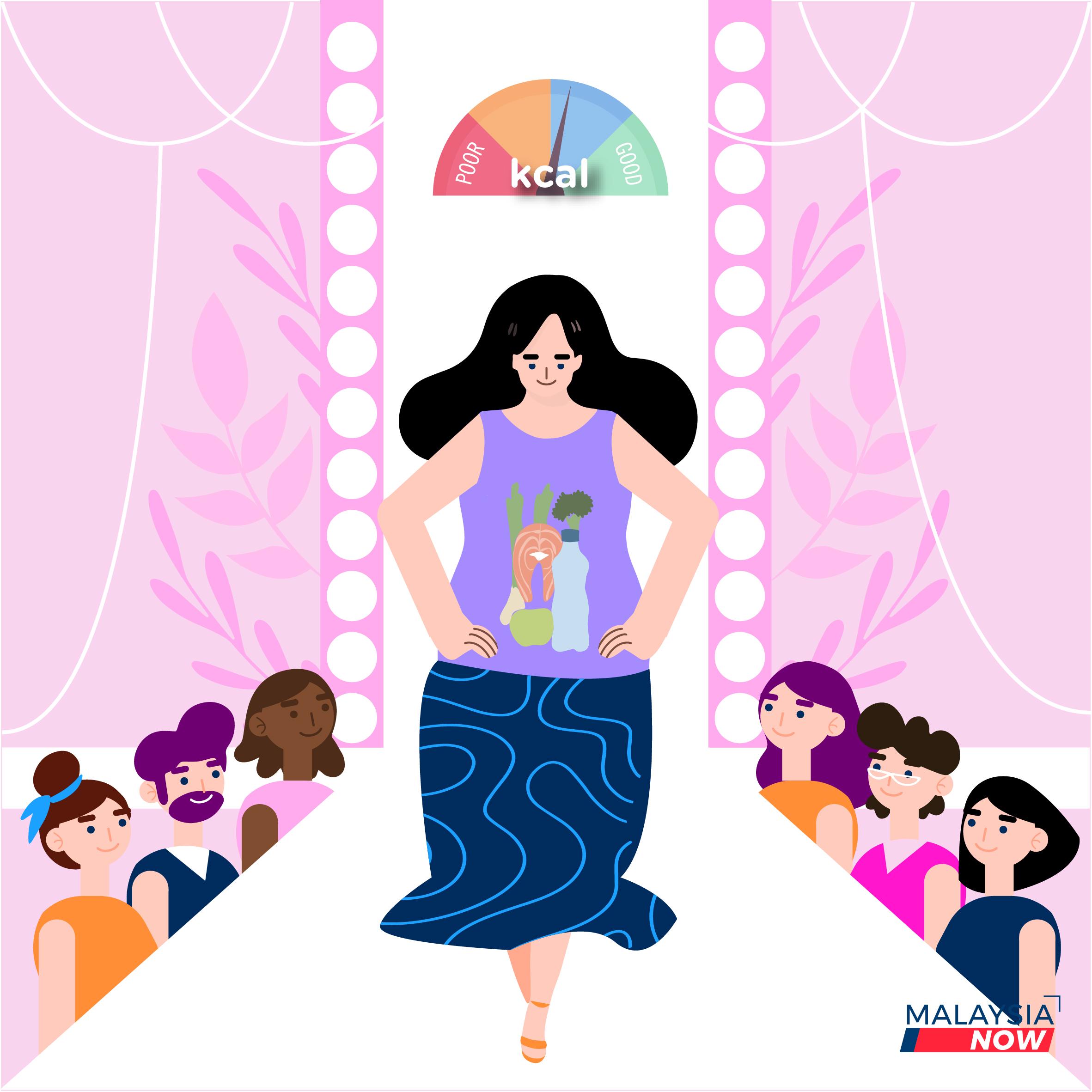Big is beautiful: Enter the calorie intake diet
This is based on the notion that as long as a person takes in the right number of calories for his or her body, it is enough regardless of whether they are big or thin.
Just In
For a long time, slim builds were considered the height of beauty with those perceived as overweight or “big-boned” shunted aside in advertisements on billboards or in newspapers, magazines and, in this day and age, social media.
But the winds of change could be on the way, with plus-sized models finding their place even on catwalks and in posh clothing boutiques.
Toy manufacturing company Mattel, known for its famously skinny Barbie dolls, began rolling out chubby versions about four years ago.
And in Malaysia, private television stations have begun to feature heavyweight news anchors – a development that would have been unheard of not too long ago.
At long last, it appears, plump, well-endowed and plain old fat people have become accepted and even celebrated instead of automatically associated with notions of obesity, health problems, overeating and an all-round lack of attractiveness.
This appears to go hand-in-hand with another trending belief: that it is “old-fashioned” to admit you’re dieting in order to lose weight.
Instead, “clean eating” is all the rage.
This fad diet, introduced in the US some 20 years ago, is based partly on the notion that calorie intake differs from one person to the next.
In short, as long as a person takes in the right number of calories for his or her body, it is enough regardless of whether they are big or thin.
Such beliefs date as far back as the Middle Ages where only the aristocracy had access to high-calorie food such as pork, chicken, fowl and fish.
The plump images of the nobility stood in strong contrast with the lower classes who more often than not subsisted on bread and water.
It was not until a few years before the Industrial Revolution that grain and wheat-based dietary patterns for the lower classes began to change.
The gentry began hankering after slimmer bodies following the demands of fashion and amid the rapid growth of the textile industry in Europe.
Those changes laid the foundation of food and cuisine for modern Europe, much of which has endured until today.
There were many ways of achieving the ideal shape, including abstaining from high-calorie food such as meat and vegetables and concentrating instead on bread, eggs and dairy products.
Hanif Loid, a health instructor and social media celebrity, said the trend of dieting according to calorie intake had existed in Malaysia for a long time.
According to him, though, the science behind the trend is kept a secret by instructors and personal trainers who wish to ensure that their tips and techniques remain their exclusive domain.
From there, they share nutrition plans and schedules on which the diet is based.
Hanif said discussions of the trend had gained momentum over the past few years, thanks to instructors and health celebrities who wished to draw more attention to their programmes.
“The calorie-counting diet is based on the practice of taking only what calories we need,” he said.
“All stomachs are different,” he added. “They’re like balloons. If we eat more, they will grow bigger. If we eat only a little, they will maintain and then normalise in size.”
In the West, he said, such terminology has been used for a long time.
“But in Malaysia, we still hold on to dietary concepts from long ago. It is only when people begin to speak out on social media that the matter gains currency.”
Hanif said the practice of dieting by keeping count of calories depends on individual goals.
If a person wishes to gain weight and build up his or her muscle mass, more calories will be needed. But if the aim is to lose weight and shed fat, calorie intake must be carefully controlled.
For Hanif, there is nothing intrinsically wrong with the trend. The concern is that Malaysians are less aware of other important matters such as muscle mass and the weight of fat and fluids.
“We think we are fat if we weigh more or have high body mass index counts,” he said.
“But that isn’t necessarily the case. Bodybuilders have more muscle than fat. Their muscle mass is very high and their fat percentage is low.”
Subscribe to our newsletter
To be updated with all the latest news and analyses daily.
Most Read
No articles found.
